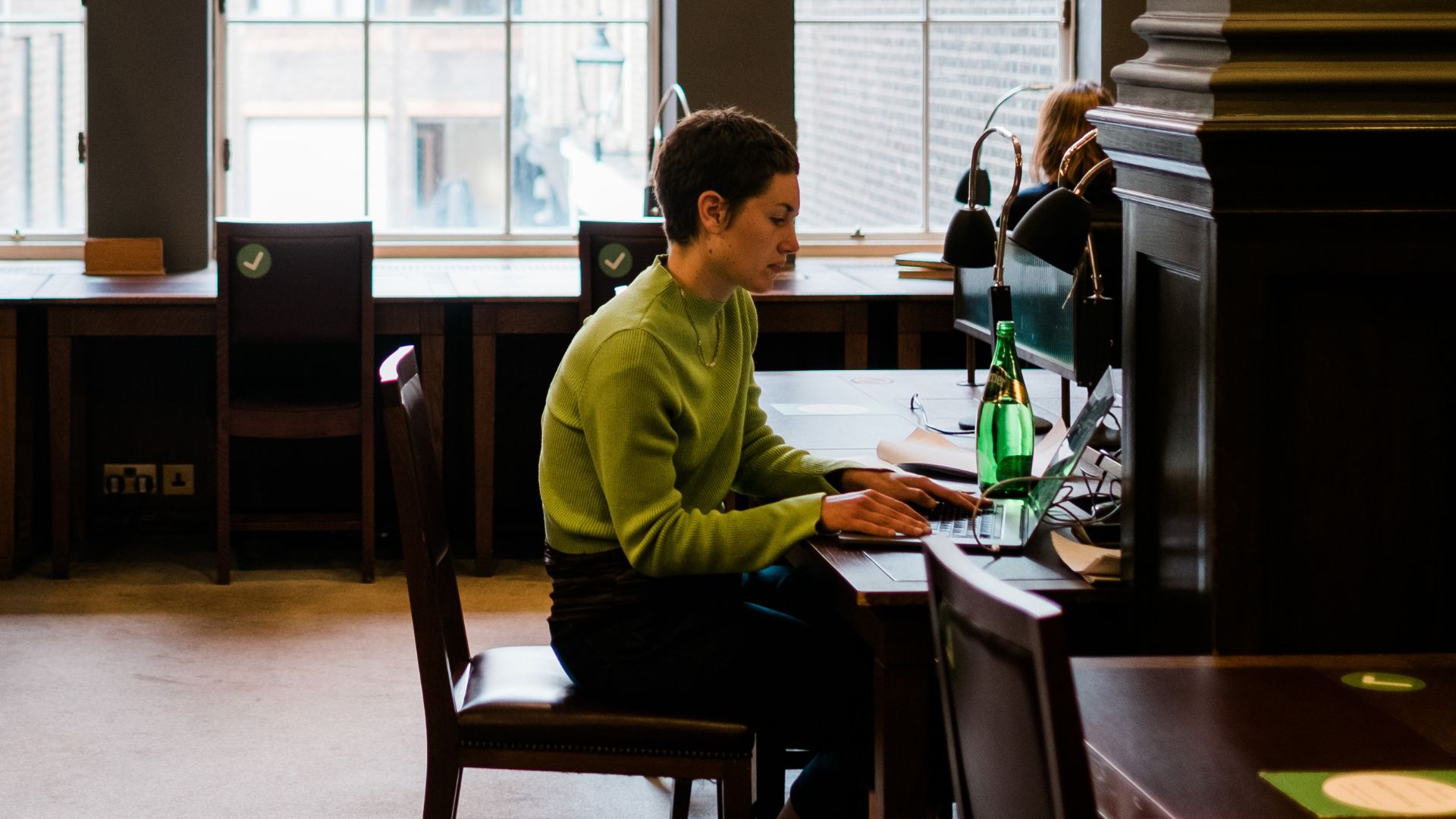As the Library looks towards the next phase of its award-winning 21st century building project, our Collection Care team is already working hard to make sure our books are ready for action.
The past decade has seen many impressive developments to the Library building, from the refurbishment of iconic spaces such as the Times Room and the Sackler Study to the addition of a whole new wing in the form of T. S. Eliot House. Now the Library is looking forward to the next stage of its building programme, which will see an extension of the Victorian Back Stacks and the refurbishment of most of our collection spaces.
In order to keep our collections safe, clean and accessible while this work is taking place, we will need to move many of our books to alternative locations. Anyone who has ever moved home will know it is essential to ensure that one’s possessions are in good order, and that they are packed and wrapped in such a way that they will arrive safely at their destination. The Library’s collections are no different, and that’s why our Collection Care team is already preparing them for what promises to be one of the largest book moves in the institution’s history.
The scale of the challenge is considerable. The nineteenth-century Back Stacks occupy seven floors and house five and a half miles of books. To make sure the books can be safely transferred en masse from their existing shelves to other another part of the library, each volume needs to be thoroughly assessed. If a book’s binding is defective, the risk of it suffering further damage is greatly increased, and would be especially high during a complex operation such as a major book move. If the binding is failing, we don’t only risk losing the book’s covers. Without its sturdy protection, text-blocks can suffer tears, staining, crumpling, and pages may also go missing.
Collection Care assistants Frances and Bettina have taken on the challenge of working through the Library’s Topography holdings, checking each volume for structural damage or any significant weakness that would render it vulnerable to rapid degradation. They have learned to identify signs of deterioration, from a few loose pages to a partially detached spine, a board held in place only by sticky tape or a text-block that no longer stands properly within the square of the binding case.
The team’s mission is to select only the most vulnerable books for treatment. Books with only minor or cosmetic damage, which are in a stable condition, are returned to the shelves. It can be a tough call to leave a book on the shelf when it requires some minor repairs, or even if it just looks a little tired, perhaps having a small amount of old tape on the spine or few small tears to the text-block. This strategic approach is nevertheless proving successful, enabling us to commit our available binding funds to those volumes that are most at risk. As the average cost of rebinding an octavo volume comes in at about £20, we need to be selective to ensure we can cover as many shelves as possible before building work commences.
Any books which are found to be particularly fragile are taken off to our Collection Care department, where they are put through a kind of triage. Some may need some to be repaired in-house before they are sent off to the bindery. Page tears are patched with Japanese tissue and wheat starch paste. In some cases we may even be able to stabilise a binding so that the book no longer needs to be sent out to a commercial contractor. Carefully-placed strips of light-but-strong aerolinen can shore up a damaged spine and reinforce any weakened joints.
Other volumes need to be sent to the bindery with specific instructions to ensure that their aesthetic is preserved. We take great care to retain original features from the covers such as illustrated papers panels, printed textiles, and even early Library book labels, which give a taste of the object’s history. Decorative endpapers are preserved where possible, and any repairs are done in cloths and papers which tone in with the original design. In a few cases, where it is impossible to keep an original feature (for example, paper covers which have been glued down onto the book boards), we’ll make a facsimile of it so that the design can still be enjoyed by future readers.
The project has been an enjoyable one for Frances. She says, “I find the Topography section fascinating, as it covers such a large range of subjects, from physical geography to national customs and other aspects of social history. As a collection, it has a lot of character and, browsing through it, you quickly discover how attitudes to travel have changed. The ‘Hints to Travellers’ section is particularly interesting, and I’ve been struck by the eloquence of many of these early guides”.
Overall, it is the transformative effect of the project that has been the most rewarding for all those involved. “I hope that members will find the Topography section even more attractive now”, says Frances. “Some of the bindings were particularly lovely, my favourite being an 1834 Italian guidebook with original leather binding and decorated metal clasps. It is wonderful that we have been able to preserve these bindings for members to enjoy for years to come”.
With between two and five books in need of treatment per shelf, there is still a long way to go until all the of the Back Stacks have been covered, but it is heartening to see how the project is already enhancing the appearance of our collections and giving them vital protection. Crucially, all the books we’ve dealt with are now more stable, and so are in a much better position to be taken off the shelves and browsed, stamped at the issue desk and then taken off in a bag to read at home.
If you would like to learn more about our Back Stacks rebinding project, please get in touch with our Collection Care department. Email judith.finnamore@londonlibrary.co.uk
























